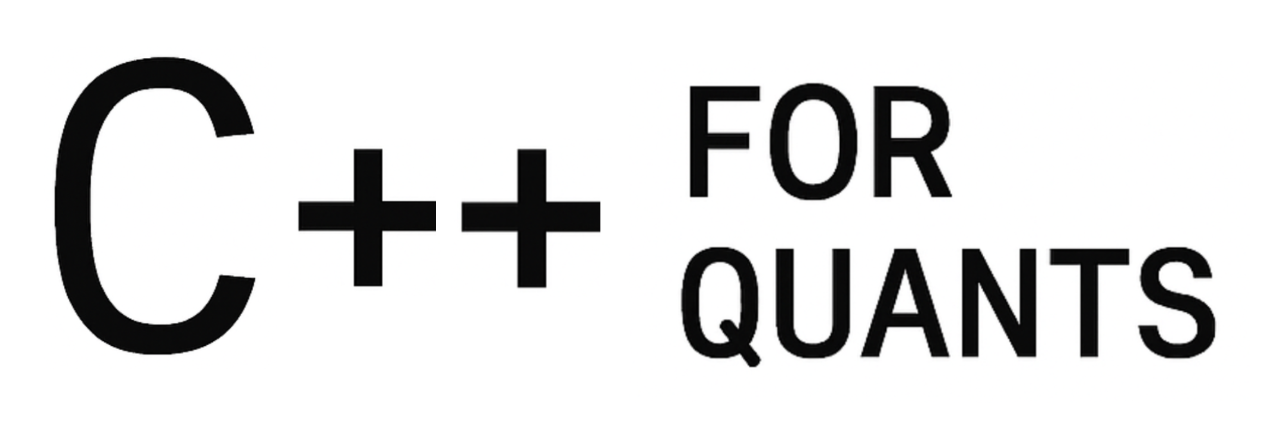In the article of today, we talk about an interview question, simple on the surface, that’s given quite a lot as interview question for quants positions: the two sum problem.
What is the two sum problem in C++?
🔍 Problem Statement
Given a list of prices and a target value, return all the indices of price pairs in the list that sum up to the target.
Example:
nums = {2, 7, 11, 15}, target = 9Output: [{0, 1}]// because nums[0] + nums[1] = 2 + 7 = 9
1. The Naive Implementation in [math] O(n^2) [/math] Time Complexity
The simple way of doing is to loop through the list of prices twice to test every possible sums:
std::vector<std::pair<int, int>> twoSum(const std::vector<int>& nums, int target) {
std::vector<std::pair<int, int>> results = {};
for (int i = 0; i < nums.size(); ++i) {
for (int j = i + 1; j < nums.size(); j++) {
if (nums[i]+nums[j] == target){
results.push_back({i, j});
};
};
};
return results;
}This can be used with the list of prices given in our introduction:
int main() {
std::vector<int> nums = {2, 7, 11, 15};
int target = 9;
auto results = twoSum(nums, target);
for (const auto& pair: results) {
std::cout << "Indices: " << pair.first << ", " << pair.second << std::endl;
};
return 0;
}Running the code above prints the solution:
➜ build git:(main) ✗ ./twosum
Indices: 0, 1The time complexity is [math] O(n^2) [/math] because we’re looping twice over the list of prices.
And that’s it, we’ve nailed the two sum problem in C++!
But…. is it possible to do better?
2. The Optimal Implementation in [math] O(n) [/math] Time Complexity
The optimal way is to use a hash map to store previously seen numbers and their indices, allowing us to check in constant time whether the complement of the current number (i.e. target - current) has already been encountered.
This reduces the time complexity from O(n²) to O(n), making it highly efficient for large inputs.
std::vector<std::pair<int, int>> twoSumOptimized(const std::vector<int>& nums, int target) {
std::vector<std::pair<int, int>> results = {};
std::unordered_map<int, int> pricesMap;
for (int i = 0; i < nums.size(); ++i) {
int diff = target - nums[i];
if (pricesMap.find(diff) != pricesMap.end()){
results.push_back({pricesMap[diff], i});
}
pricesMap[nums[i]] = i;
};
return results;
}And we can run it on the exact same example but this time, it’s O(n) as we loop once and hash maps access/storing time complexity are O(1):
int main() {
std::vector<int> nums = {2, 7, 11, 15};
int target = 9;
auto results = twoSumOptimized(nums, target);
for (const auto& pair: results) {
std::cout << "Indices: " << pair.first << ", " << pair.second << std::endl;
};
return 0;
}3. A Zoom on Unordered Hash Maps in C++
In C++, std::unordered_map is the go-to data structure for constant-time lookups. Backed by a hash table, it allows you to insert, search, and delete key-value pairs in average O(1) time. For problems like Two Sum, where you’re checking for complements on the fly, unordered_map is the natural fit.
Here’s a quick comparison with std::map:
| Feature | std::unordered_map | std::map |
|---|---|---|
| Underlying Structure | Hash table | Red-Black tree (balanced BST) |
| Average Lookup Time | O(1) | O(log n) |
| Worst-case Lookup Time | O(n) (rare) | O(log n) |
| Ordered Iteration | ❌ No | ✅ Yes |
| C++ Standard Introduced | C++11 | C++98 |
| Typical Use Cases | Fast lookups, cache, sets | Sorted data, range queries |
Use unordered_map when:
- You don’t need the keys to be sorted
- You want maximum performance for insert/lookup
- Hashing the key type is efficient and safe (e.g.
int,std::string)
Let me know if you’d like to add performance tips, custom hash examples, or allocator benchmarks.
The code for the article is available here:
https://github.com/cppforquants/twosumprices


